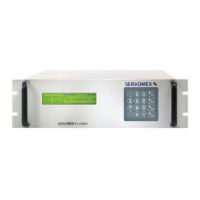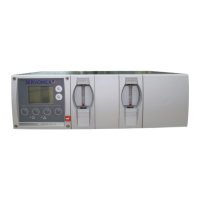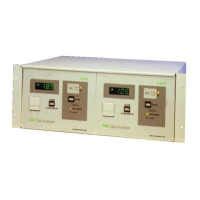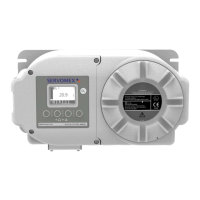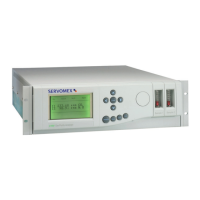4.4
4.2.3 End Boss Vents
When a flammable, severely corrosive or toxic gas or liquid is present in the
sample cell, either as the sample or a background gas, additional issues arise.
The construction of the cell window seal is such that any leak of the seal or failure of
the window will result in the sample gas entering the end boss, but not being released
to the surrounding atmosphere or directly into the analyser enclosure. This is a
deliberate safety feature of the design. However it is necessary that steps are taken to
deal with the leak so that no permanent hazard arises, and permanent sealing of the
end bosses and the use of scrubbers is not generally acceptable. Instead, the end
bosses will be supplied with adaptors for connecting vent or purge lines.
If the measurement is not affected by atmospheric gases, then a single vent connection
of at least 4mm I.D. should be made to each end boss, which will vent to atmosphere
in a safe location where release of the sample will not cause a hazard. If the sample
pressure exceeds 50kPa (7 psig), the vent should be 8mm I.D., and the sample cell
outlet connection should be fitted with a non return valve, and the sample cell inlet
connection should be fitted with a restrictor which will limit the total flow to less than
10 litres/min in the event of total window failure.
4.2.4 End Boss Purge
If the measurement is affected by atmospheric gases, then in addition to the vent
described above, the second connection to each end boss should be connected to a
supply of dry (1) nitrogen (2) regulated to a flow of 100ml/min using a suitable flow
meter. Ensure that the end boss purge is always vented to atmospheric pressure and
the pressure within the end boss dead volume space does not exceed 2.5psig.
Suitable precautions should be made to ensure that, in the unlikely event of a
catastrophic failure of the cell window /sealing, sample gas is prevented from
contaminating the purge gas supply.
(1)
Dry means a dew point of below -30 deg C.
(2)
Dry CO
2
-free air may also be used in most applications except low-level CO
2
.
Hazardous Area Certification – flammable samples, additional note
The analysers are certified for use in either Zone 2 / Div II or Zone 1. In all cases this
certification does not permit the analyser (or any part of its enclosure) to be exposed to
a permanently flammable atmosphere. Sealing the end-bosses with scrubbers when
measuring a flammable sample would mean that should there be a cell window leak,
the part of the enclosure that the end boss seals against would become exposed to a
permanently flammable atmosphere. Venting or purging the end bosses resolves this
issue.
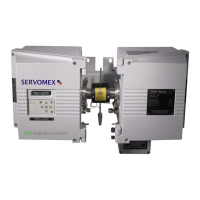
